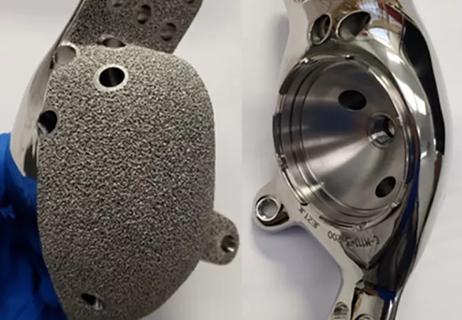How it actually compares to posterior and lateral approaches

Advertisement
Cleveland Clinic is a non-profit academic medical center. Advertising on our site helps support our mission. We do not endorse non-Cleveland Clinic products or services. Policy
Total hip arthroplasty (THA) is a common procedure to treat osteoarthritis, osteonecrosis and even femoral neck fractures. The three main approaches are posterior (from the back), direct lateral (from the side) and direct anterior (from the front).
Since THA is a successful operation when performed well, surgeon familiarity and comfort with the chosen approach are important. Simply put, for optimal outcomes, surgeons should perform the approach with which they are most comfortable.
Over the past 20 years, many surgeons have shifted to the direct anterior approach for various reasons. While many believe this shift is purely a marketing strategy, the benefits of early patient mobilization and recovery cannot be denied. Patients tend to heal slightly quicker from the direct anterior approach compared to posterior and direct lateral approaches. However, the long-term benefits of THA are independent of approach.
Patients often inquire about the THA approach used by their surgeon — sometimes for reasons based on misperceptions about anterior and other approaches. Here we debunk three widespread myths about direct anterior THA.
Actually, minimally invasive techniques exist for all approaches to THA. All can be performed accurately and safely with minimal dissection. Many surgeons perform an excellent minimally invasive posterior or lateral THA.
Conversely, the direct anterior approach can be quite extensile, exposing the retroperitoneal inner table of the ilium as well as the entire femur through extension to the iliotibial band.
Advertisement
In truth, all THA surgical techniques require cutting muscle. The idea that a direct anterior approach can cut no muscle is inaccurate. Often the conjoint tendon, gluteus minimus, piriformis and even the obturator internus are released or recessed to allow for adequate exposure for femoral stem preparation. This is compared to cutting the gluteus maximus and iliotibial band superficially and the piriformis and short external rotators deep in the posterior approach. The direct lateral approach requires partial removal of the gluteus medius (abductor) tendon from the greater trochanter, sometimes resulting in a postoperative limp.
The key difference with direct anterior THA is that the iliotibial band and gluteus maximus are not dissected through, which can result in less pain early in recovery.
As surgeons have become more familiar with the direct anterior approach, the complexity of cases performed with it has increased. Revision THA for infection, fracture and bearing surface wear is now routinely performed with the direct anterior approach. Innovations such as powered impaction devices show promise in improving operating room efficiency and consistency of the femoral preparation.
I have transitioned more of my cases to direct anterior THA because I have more confidence and familiarity with the approach versus posterior and lateral approaches. I currently perform all my elective THA cases using this approach.
Within direct anterior THA, techniques can involve using a standard operating room table or a specialized orthopaedic table. Robotic assistance can be used to help in preparation and positioning of the acetabular component. When using a specialized orthopaedic table, fluoroscopy can help with preparation and positioning of the acetabular component as well as positioning of the femoral component and reproducing leg length and offset compared to the preoperative or contralateral hip.
Advertisement
Ultimately, surgeons should perform the surgery using the technique with which they are most comfortable, knowing that THA is a successful operation independent of surgical approach.
Dr. Deren is an orthopaedic surgeon at Cleveland Clinic and specializes in adult reconstructive surgery.
Advertisement
Advertisement

Multidisciplinary care can make arthroplasty a safe option even for patients with low ejection fraction

High-risk procedure prepares patient for lifesaving heart surgery

Cleveland Clinic is among the first in the U.S. to perform the procedure

Insights to help orthopaedic practices comply with the 2025 CMS mandate

Dr. Piuzzi wins 2025 Kappa Delta Young Investigator Award for pioneering work

For patients with anatomic abnormalities, substantial bone loss and pre-existing hardware

Offers adequate exposure of normal and abnormal anatomy

Custom components offer better outcomes when conventional options fail